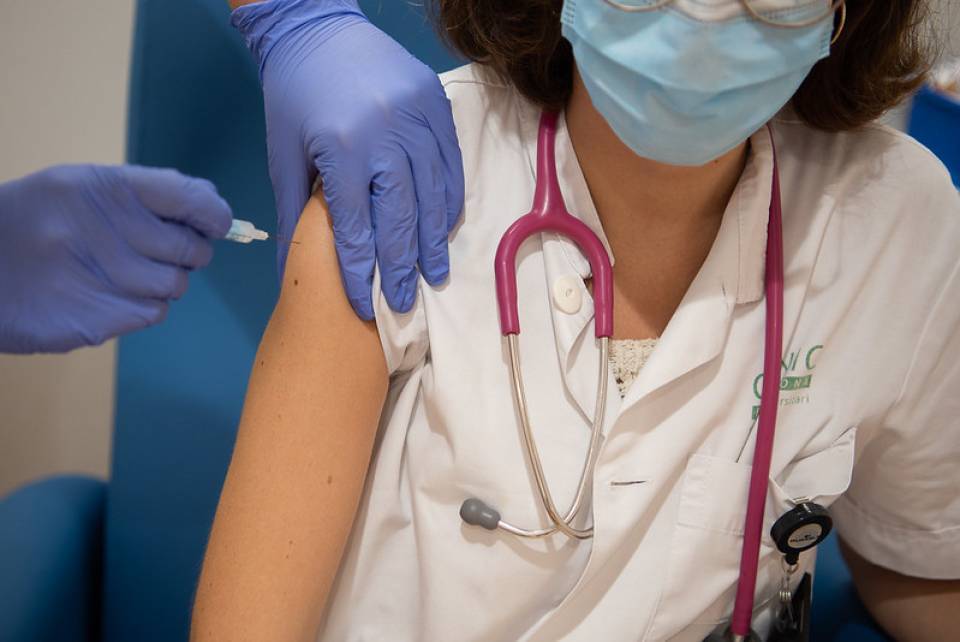During each flu season, an estimated 20% of healthcare workers become infected with the virus. Around 40% - 70% of them develop symptoms, while the rest have the infection in a subclinical but still transmissible form. Studies have been carried out in nursing homes that show a significant reduction in mortality from flu if the vaccination coverage of healthcare personnel is greater than 60%.
Vaccination against influenza significantly reduces the severe cases that require admission to intensive care units. Therefore, this provides important protection, especially in patients with chronic respiratory diseases. These patients are one of the most vulnerable groups for contracting the flu. Healthcare personnel are one of the groups most in contact with patients and, therefore, at greater risk of transmitting the disease to these people.
According to the Spanish Ministry of Health report on the flu vaccine coverage for the period 2018-19, only 35% of health personnel were vaccinated in that campaign. This is 174,220 of the 497,621 people who that year worked as health workers in Spain. This is low compared to the 54% of patients 65 years and older and 40.6% of pregnant women who were vaccinated in the same period. The following year, 2019-20, on the other hand, broke all records, with the number of health personnel vaccinated reaching 62% of the total. This increase was associated with the appearance of the pandemic and concerns about the high occupancy of health centres, which may not have been able to cope with a strong flu epidemic in 2020.
In some countries it is compulsory for health personnel who take care of high-risk patients to receive annual vaccinations. One example is the US, where vaccination coverage has reached 90%. In Spain, vaccination is still just a recommendation, so coverage is low in this group. However, hospitals with active vaccination programmes for health workers have reduced the incidence of flu in these personnel by 88%, and reduced mortality in patients with complications following infection by almost 50%.
Why is there still a reluctance to get vaccinated?
The main reasons are self-perception of good health, lack of contact with high-risk patients, the fear of adverse effects and the risk of becoming ill. According to the Vaccine Advisory Committee report, to improve vaccination coverage within the healthcare field, access to vaccination needs to be made easier, an annual review of the situation should be conducted and training should be offered on the importance of getting vaccinated. This applies to both the medical and nursing community and to students of these disciplines.
Annual vaccines against the flu are always tested and approved by the Food and Drug Administration (FDA), which guarantees compliance with all safety and effectiveness requirements. Every year in February, the WHO publishes the composition of the vaccine for the northern hemisphere. These are vaccines of three different strains, called trivalent, and can be produced from cell cultures, embryonated eggs or recombinant viruses. All three methods serve to reproduce the virus and purify its antigen, a protein on its surface.
This year, the vaccination campaign begins in the second half of October for health and social health personnel. The COVID-19 pandemic has highlighted the importance and effectiveness of vaccination. In this next campaign, we will see how the commitment of health personnel to flu vaccination compares with previous years, out of responsibility for the people at risk they take care of.




